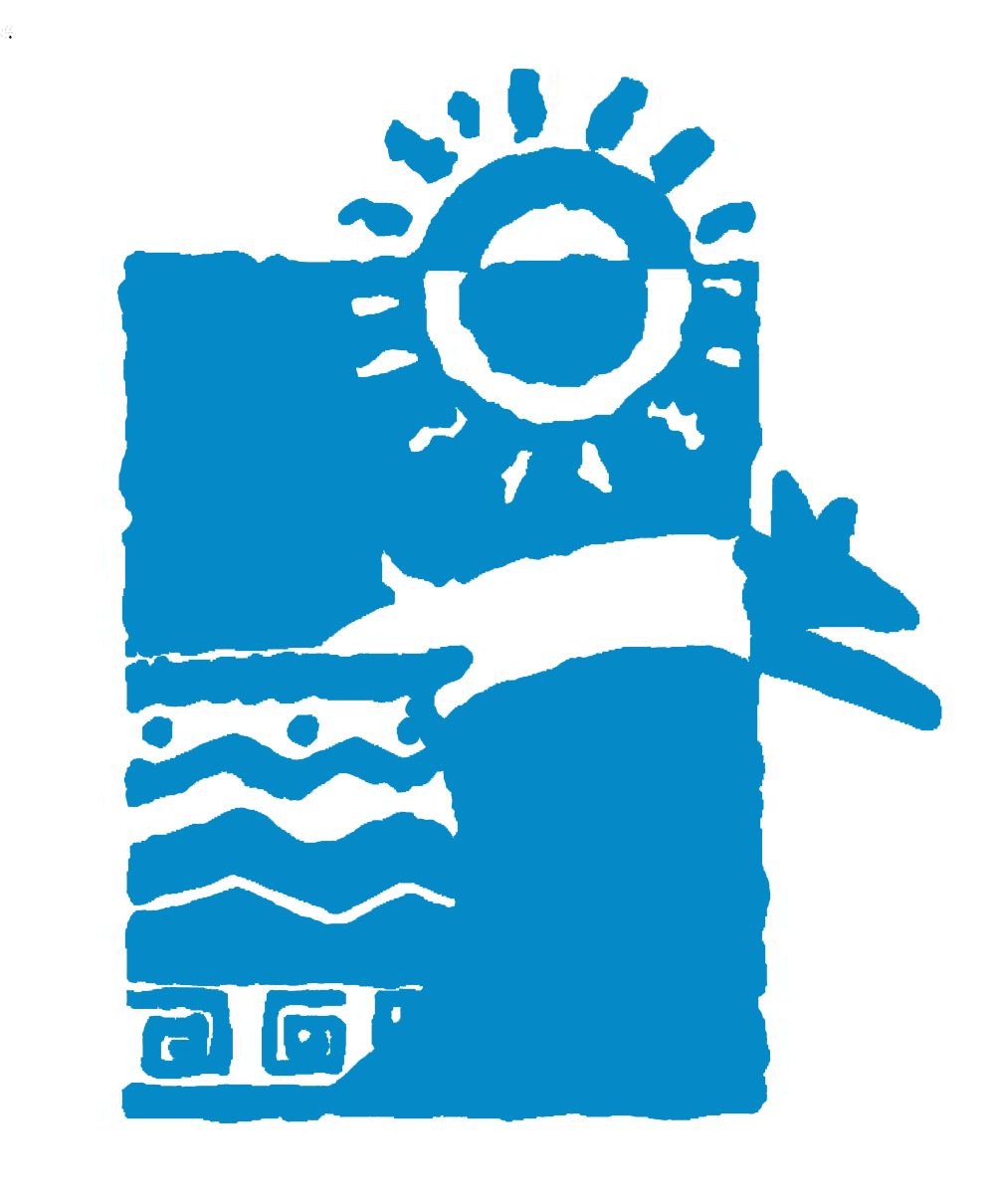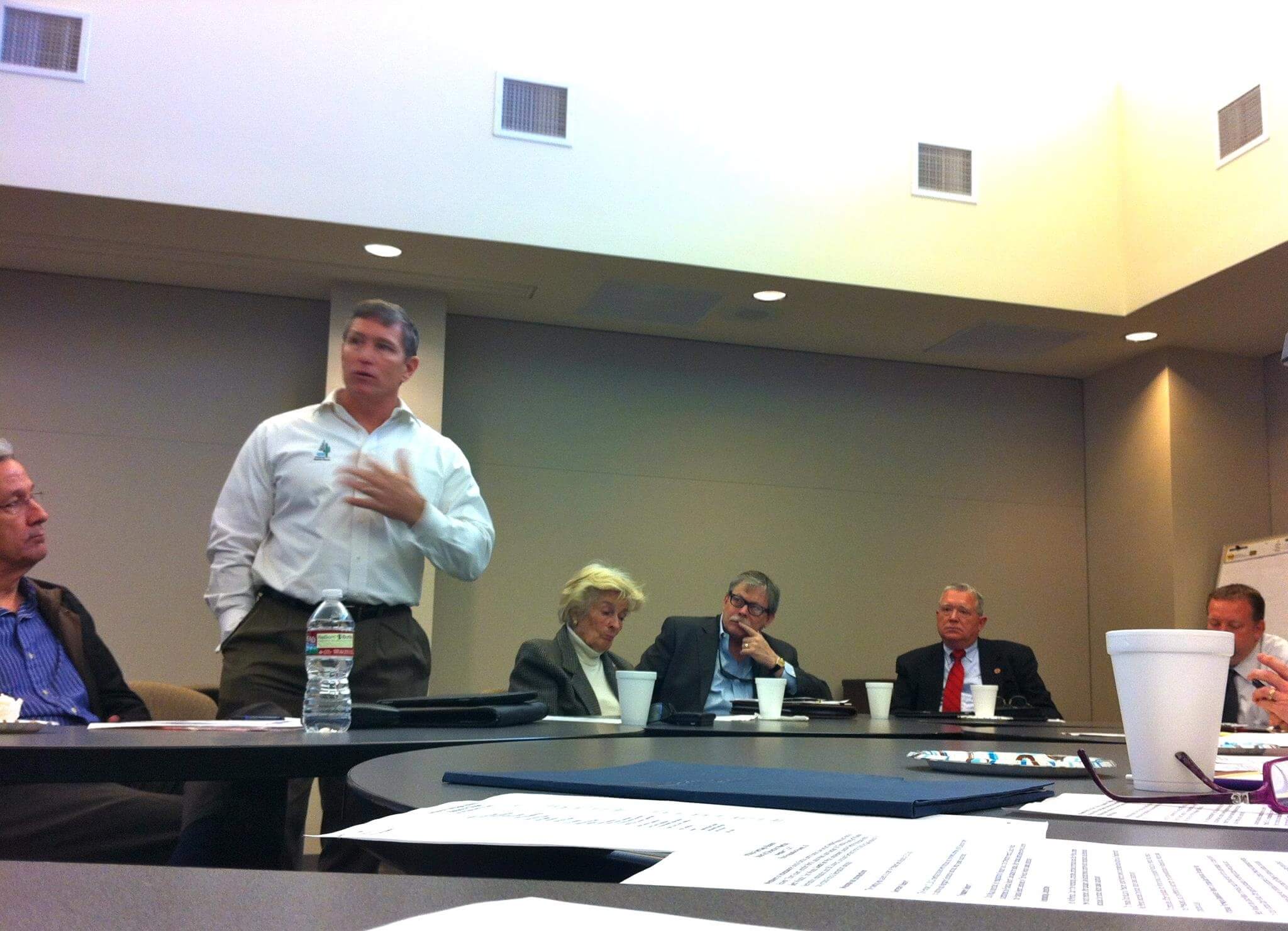Bryan Martyn, Arizona State Parks Director, gave a detailed “state of state parks” update to the Arizona Heritage Alliance‘s board of directors this morning. — with Bob White, Barbra Barnes, Woody Wilson, Russ Jones and Peter Culp at Flinn Foundation on February 19, 2013.
Heritage Fund
After years of budget cuts, greener outlook for Arizona State Parks
[Source: Cortney Bennett, Cronkite News Service]– After years of delivering deep cuts, lawmakers this session are discussing ways to give Arizona State Parks some more money and bring back a lottery-funded grant program the agency administered.
Sandy Bahr, director of the Sierra Club’s Grand Canyon Chapter, said there seems to be a core group of representatives who are concerned about funding state parks properly. “It is a pleasure to come to the Legislature this year and see several bills that are supporting state parks instead of the opposite,” Bahr told a House committee recently.
HB 2621, introduced by Rep. Juan Carlos Escamilla, D-San Luis, would establish a voluntary fee that owners could pay when registering vehicles. The House Agriculture and Water Committee unanimously approved the bill Feb. 19. “Our state parks are a lot of times our economic tool for small, rural areas,” said Escamilla, whose district includes two state parks. The fee, which under the bill would be set by the Arizona State Parks Board, would provide 85 percent of total proceeds to Arizona State Parks and 15 percent to the Arizona Department of Transportation.
Bryan Martyn, executive director of Arizona State Parks, said Escamilla’s bill would help the agency, which operates primarily on gate fees and since 2009 has received no general fund appropriation. “Make no mistake, Arizona State Parks is a business,” Martyn said. “And we have to search every day to try to figure out how to fund these state resources.”
Cristie Statler, executive director of Arizona State Parks Foundation, an advocacy group, said money generated by the fee would help parks with operations and maintenance. However, she said, it doesn’t solve the agency’s need for sustainable long-term funding. Statler noted that many of the state’s 30 parks currently rely on partnerships with nearby municipalities and nonprofit organizations. “Cities and towns cannot sustain these partnerships,” Statler said. “Their revenues have been stripped as well. What we’re doing is passing this obligation from the state to these cities and towns.”
Bahr said that in the past the Legislature has seemed to view state parks as an expendable luxury. She said the Legislature should come up with a sustainable revenue stream. “These are important assets that protect amazing cultural and biological resources as well as help to sustain many rural economies,” Bahr said.
Joseph Garcia, communication director for Arizona State University’s Morrison Institute for Public Policy, said it’s encouraging to hear discussion about finding a funding mechanism for state parks that are operating on shoestring budgets. “But if we’re really talking about improving and preserving state parks so they’re more visitor-friendly, then that needs an investment,” Garcia said. The Morrison Institute published a 2009 study that found Arizona spent less on its park system than nearly any other state when viewed as a percentage of the overall budget. “It’s sad that with all the money and energy thats been invested in state parks they’ll close or deteriorate or people won’t visit them because they don’t have modern amenities,” Garcia said.
Meanwhile, HB 2594, sponsored by Rep. Ethan Orr, R-Tucson, would among other provisions reinstate the Arizona State Parks Heritage Fund, which used Arizona Lottery proceeds to provide grants for park programs, trails, historic preservation, environmental education and related projects. Arizona State Parks used some of the money for acquisitions and improvements. Arizona State Parks and the Arizona Game and Fish Department had received up to $10 million annually before the Legislature eliminated the Heritage Fund in 2010.
The House Committee on Energy, Environment and Natural Resources endorsed the measure Feb. 18, forwarding it to the Appropriations Committee. Janice Miano, director of administration at the Arizona Heritage Alliance, said communities across the state would benefit from reinstating the Heritage Fund. “Every community in Arizona has received at least one Historical Fund grant over the last 23 years,” Miano said. “It’s certainly an economic engine for the rural communities. It brings in projects that wouldn’t normally be funded.”
Statler said that access to parks in terms of affordable entrance fees could be jeopardized if Arizona State Parks doesn’t receive adequate funding. “You can’t jack up the fees so much that the public can’t visit these parks that are state-owned assets,” Statler said.
Meanwhile, Martyn, the agency’s executive director, said he’s happy that Gov. Jan Brewer’s proposed budget included Arizona State Park’s requested operating budget of $21 million along with $2 million in Arizona Lottery proceeds for capital improvements. “The onus still is on us to demonstrate our value added to Arizona,” Martyn said. “Arizonans have to believe in state parks if we expect them to contribute.”
Bill to Reinstate Arizona State Parks Heritage Fund Passes House Committee 8-0 ~ Please call Representative John Kavanagh
On Monday, February 18, HB2594, a Bill to reinstate the Heritage Fund, passed unanimously in the Arizona House Committee on Energy, Environment and Natural Resources
HB2594 would reinstate the Local Transportation Assistance Fund (LTAF), which helps to fund transit services, and also the Arizona State Parks Heritage Fund, which funds parks programs, environmental education, trails, historic preservation, and more.
Both of these funds received Arizona Lottery revenues but were eliminated by the Legislature and Governor during the 2010 state budget crisis. Under this bill, both funds would receive their original allocations — LTAF would receive $9 million per year and Heritage Fund $10 million per year.
Representative Ethan Orr of Tucson is the primary sponsor of HB2594 with Representatives Juan Carlos Escamilla of San Luis, Karen Fann of Prescott, Frank Pratt of Casa Grande, T.J. Shope of Coolidge, Bob Thorpe of Flagstaff, and Bruce Wheeler of Tucson as cosponsors.
Beth Woodin of Tucson, president of the Arizona Heritage Alliance, noted, “It is heartening to see state legislators recognize the need to restore the Heritage Fund that was overwhelmingly supported by voters in 1990. Over the years, millions of dollars in Heritage Fund matching grants have developed new parks, trail systems, campgrounds, picnic facilities, and lake improvements, as well as preserved important parts of our rich cultural heritage.”
In a study conducted by the Arizona Hospitality Research & Resource Center at Northern Arizona University, it was found that direct expenditures from the Arizona State Parks Heritage Fund in 2007, the last full year of Heritage Fund matching grants, were $12.9 million spent on both land acquisition and construction related to maintenance and repair. Direct program expenditures resulted in indirect expenditures of $4.6 million and induced expenditures of $8.5 million for a total economic impact of $26.1 million. Direct expenditures resulted in 125 direct jobs, 33 indirect jobs, and 66 induced jobs, for a total of 224 jobs from the Arizona State Park Heritage Fund. Estimated total taxes for these expenditures (Local, State, and Federal) were $3.3 million.
William Schwind, vice president of the Arizona Parks and Recreation Association, stated, “It’s now our hope that the House Appropriations Committee, under the chairmanship of Representative John Kavanagh of Fountain Hills, will give HB2594 a full and fair hearing and move the legislation to the House floor.”
However, two similar bills in the last two legislative sessions were not advanced by Chairman Kavanagh. When recently asked if he would hear HB2594 in Committee, he refused. The reinstatement of the State Parks Heritage Fund is in his hands. He needs to know today that the citizens of Arizona care about this issue.
We urge you to please call or email Representative John Kavanagh at jkavanagh@azleg.gov, 602-926-5170 and ask him to PLEASE HEAR HB2594 in House Appropriations Committee.
Black-Footed Ferret spotlighting
[Source: Matt Fesko, Arizona Heritage Alliance Vice-President] –
I participated in the Fall 2012 Arizona Department of Game and Fish Black Footed Ferret spotlighting event in Aubrey Valley. Black-footed ferrets (Mustela nigripes) are one of North America’s most endangered mammals. The primary goal of the Arizona reintroduction effort is to establish a free-ranging, self-sustaining population of black-footed ferrets in the Aubrey Valley Experimental Population Area (AVEPA). I was paired with two volunteers from Northern Arizona University. After a short introductory video and training session at the Game and Fish field house in Seligman, we headed out to Aubrey Valley with our spotlights and traps to trap ferrets from 10 pm until 6 am. It was a rewarding experience to see first hand these amazing creatures in their natural nocturnal habits. The Game and Fish staff and all of the volunteers did a fantastic job.
Below are the results of the outing that I received in a very nice thank you card from the Arizona Department of Game and FIsh BFF Team: “Thank you for your help during the 2012 fall spotlighting event. We really would not be able to get the job done without the invaluable help of so many dedicated volunteers. During the fall event we caught 65 ferrets, of which 57 were unique BFF’s. Fifty-one of these ferrets were brand new and 9 of the ferrets trapped had been caught during the previous events, which we like to see because we get an idea of long term survivability in the population. We had 44% trap success this event. Over the 5 nights we had a total of 144 volunteers, of which 103 were brand new. We broke our previous record of 22 ferrets caught in one night, with 23 captured on the first night! With a spring count of 53 individuals and a fall count of 57 individuals we have a minimum population of 110 ferrets; falling just short of last year’s population count of 116. Thank you again for your help and we hope to see you at another event!”


You must be logged in to post a comment.